10 Gripping Images of Hurricane Katrina on its 10 Year Anniversary

By:
Hurricane Katrina ranks among the most deadly, destructive, and costly storms to make landfall in the U.S.' recorded history. More than 1,800 people died in the Category 5 hurricane and subsequent floods that rushed through the streets of the Southeast, leaving only a path of debris in its wake.
It has been 10 years since Hurricane Katrina thrashed through the Gulf coast, surging over the levies of Louisiana on August 29, 2005. And even after a decade, recovery efforts are ongoing. The total economic toll of the storm is an estimated $108 billion; the human toll is incalculable. Not only were homes, businesses, and livelihoods destroyed, but the entire infrastructure of the coastal region—especially in commercial shipping and oil production—was affected.
Families were displaced, cruise ships were overturned, and hundreds were left stranded on roofs and makeshift floatation devices for days on end, dehydrated and exhausted from the August heat. Widely covered by the media, Hurricane Katrina left a powerful impression on million of Americans whose hearts went out to those who found themselves in desperate need of shelter, food, and water as rescue teams conducted searches and delivered boxes of essentials along the razed roads.
To commemorate the tenth anniversary of Hurricane Katrina, here are 10 photos of the aftermath of the storm and its resilient survivors.
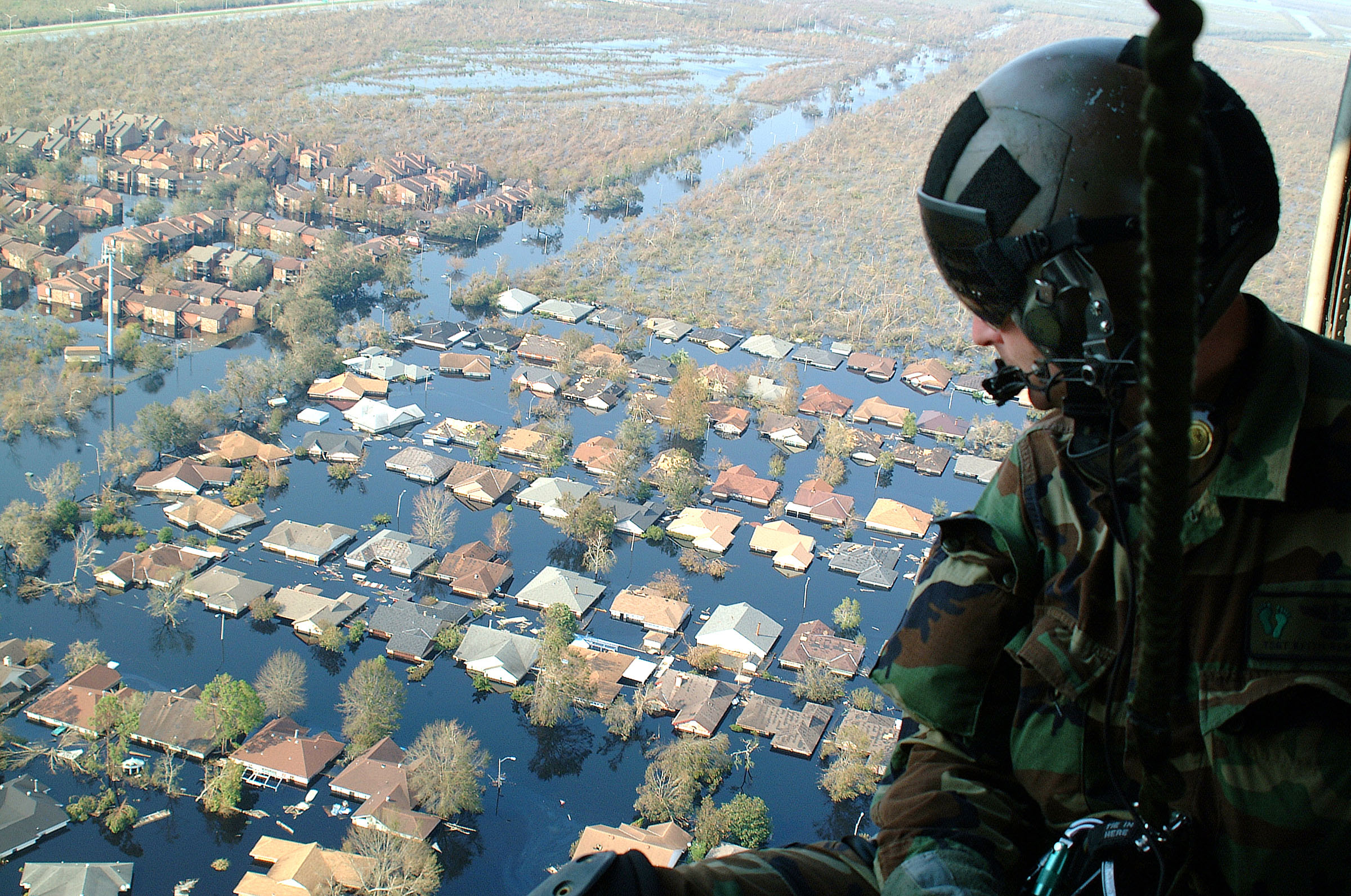
A member of the U.S. Air Force overlooks a flooded residential area in Louisiana, where only the roofs of homes peak over the water. In the background, a field of bare branches marks the wetlands, one of the many ecological areas damaged by the storm.
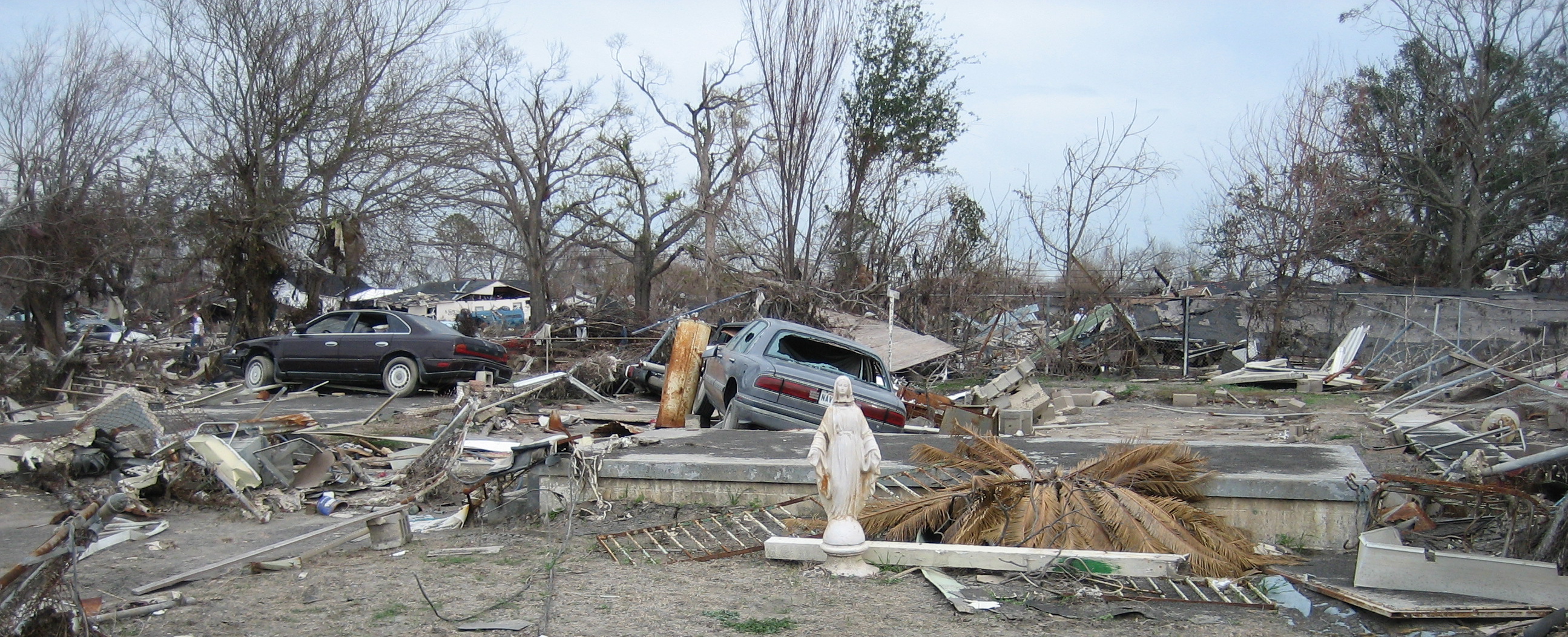 Flickr - flickr.com
Flickr - flickr.com
A statue of the Madonna stands erect amid a ravaged scene, contrasting the broken cars and rubble littering the road. Scraps of metal and household items are scattered throughout the image. Along the Gulf coast, water reached six to 12 miles inland from the beach.
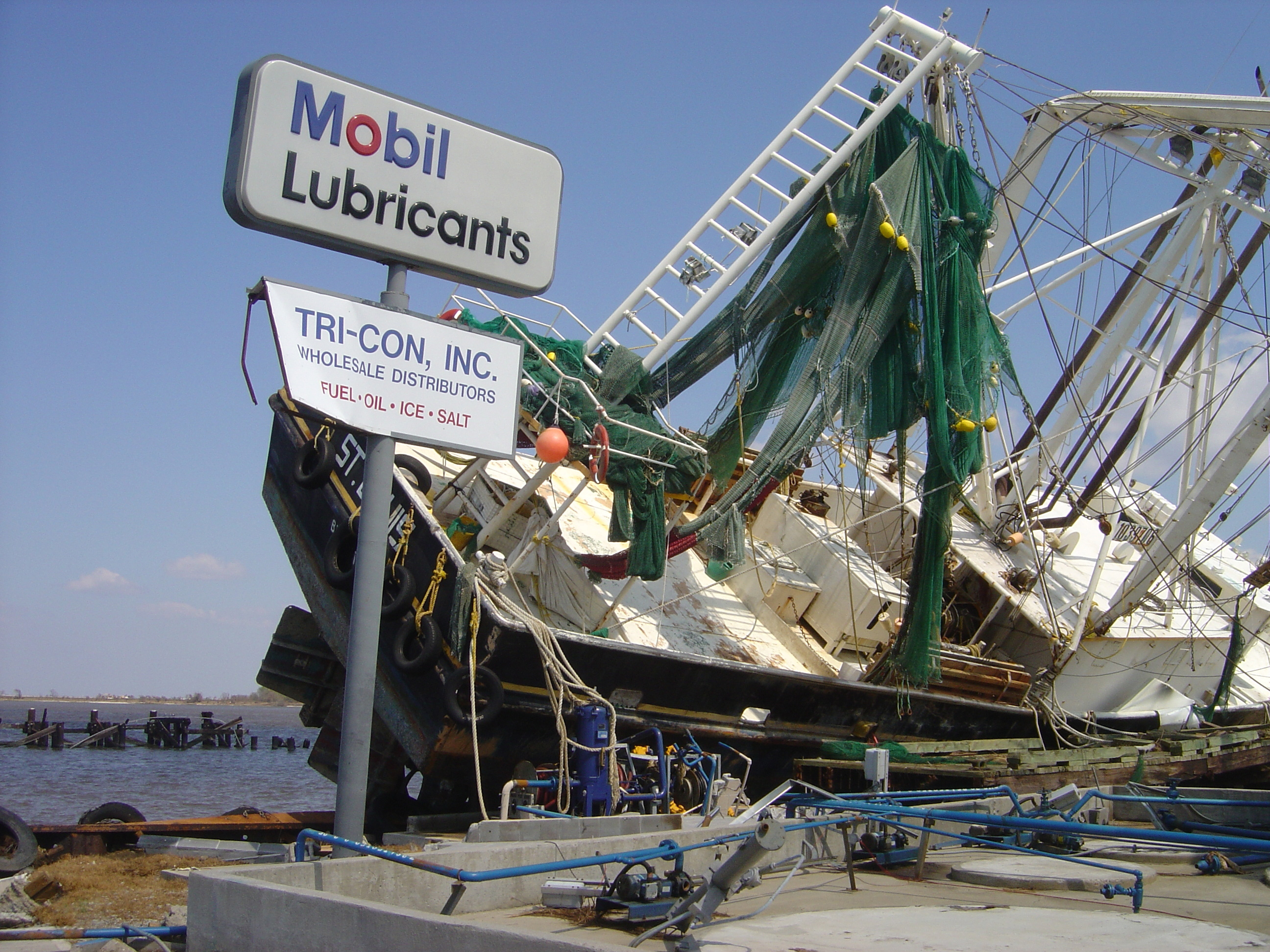 NOAA - flickr.com
NOAA - flickr.com
One of the many overturned ships that washed ashore in the wake of Hurricane Katrina, this commercial fishing boat ended up on the port of a distribution center owned by Exxon Mobil. The storm damaged 44 oil production facilities in Louisiana, causing about seven million gallons of oil to gush into the Gulf of Mexico.
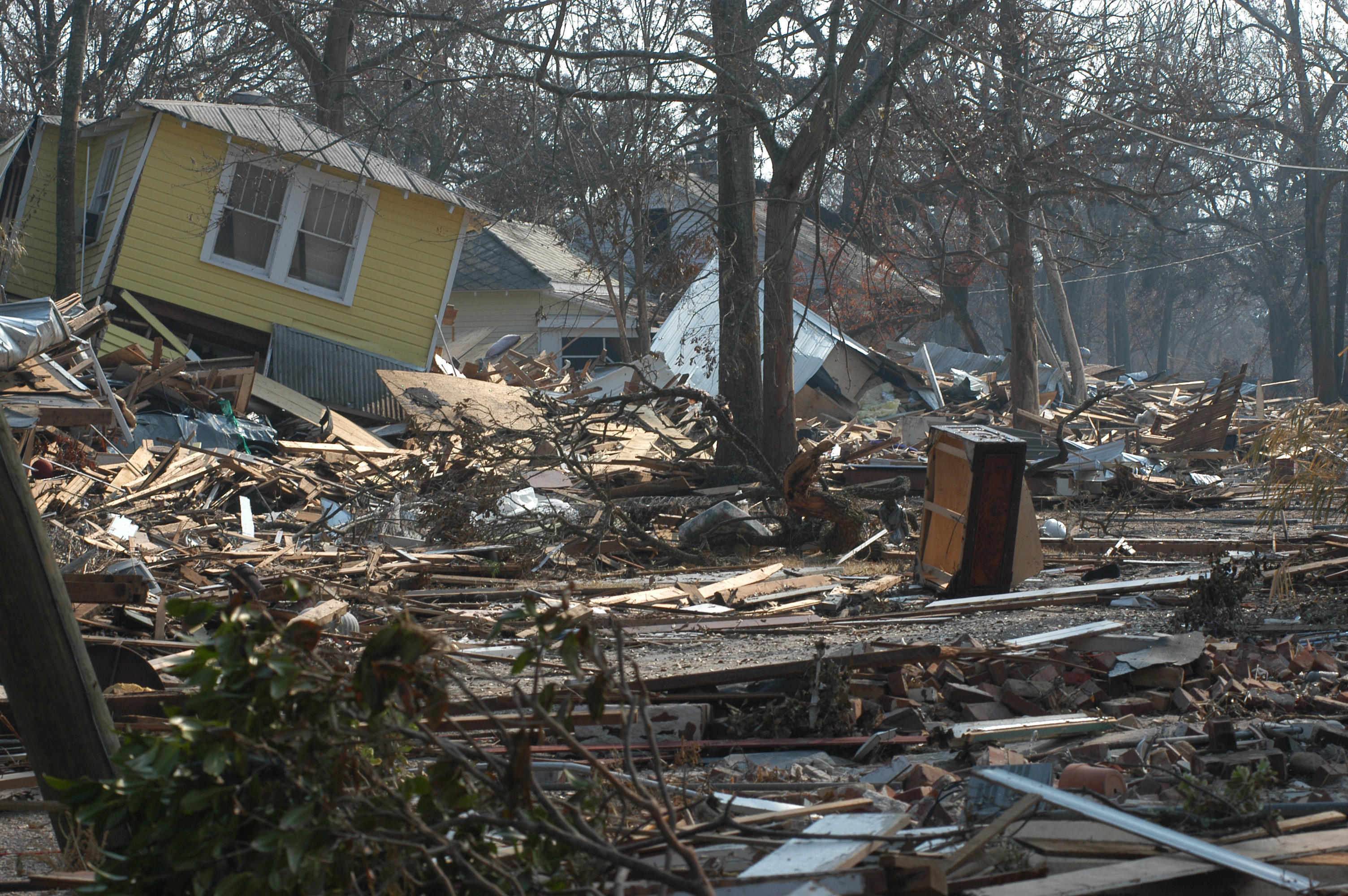 Wikimedia
Wikimedia
More than one million people were displaced in the Gulf region following the storm. At its highest point, hurricane relief shelters housed more than 273,000 people, and approximately 114,000 families were later placed in FEMA trailers, according to CNN.
 Wikimedia - wikimedia.org
Wikimedia - wikimedia.org
Thousands of those displaced by Hurricane Katrina arrived in Houston, Texas, where the Red Cross had set up a temporary shelter. Home to the Texas-based MLB team, the Houston Astros, the stadium canceled all events scheduled through the end of 2005 following the storm.
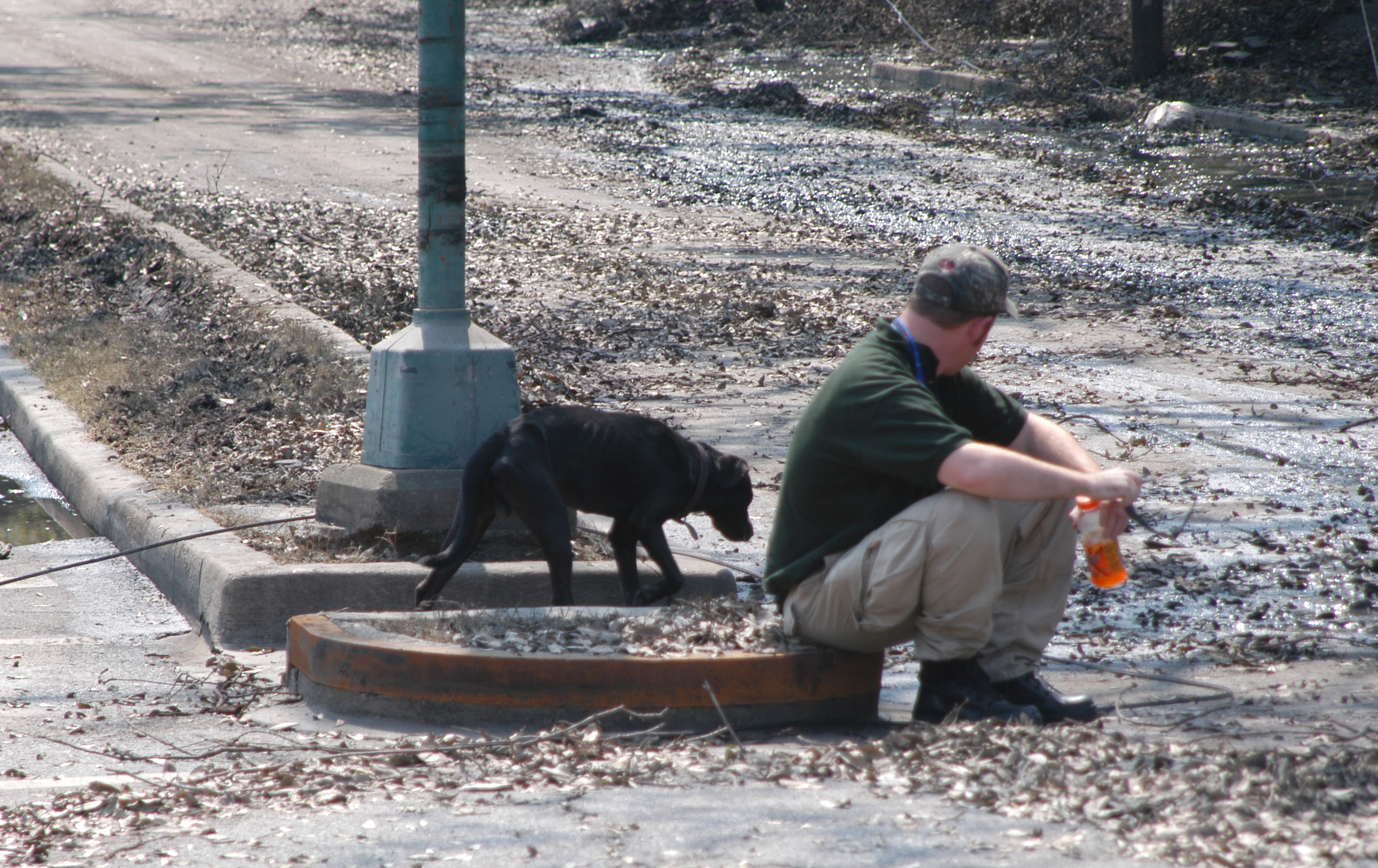 Wikimedia - wikimedia.org
Wikimedia - wikimedia.org
A moving image of a man and his dog, caught in the middle of a debris-filled street. According to the Federal Emergency Management Agency, more than 8,000 animals were rescued and taken to shelters across the Gulf region.
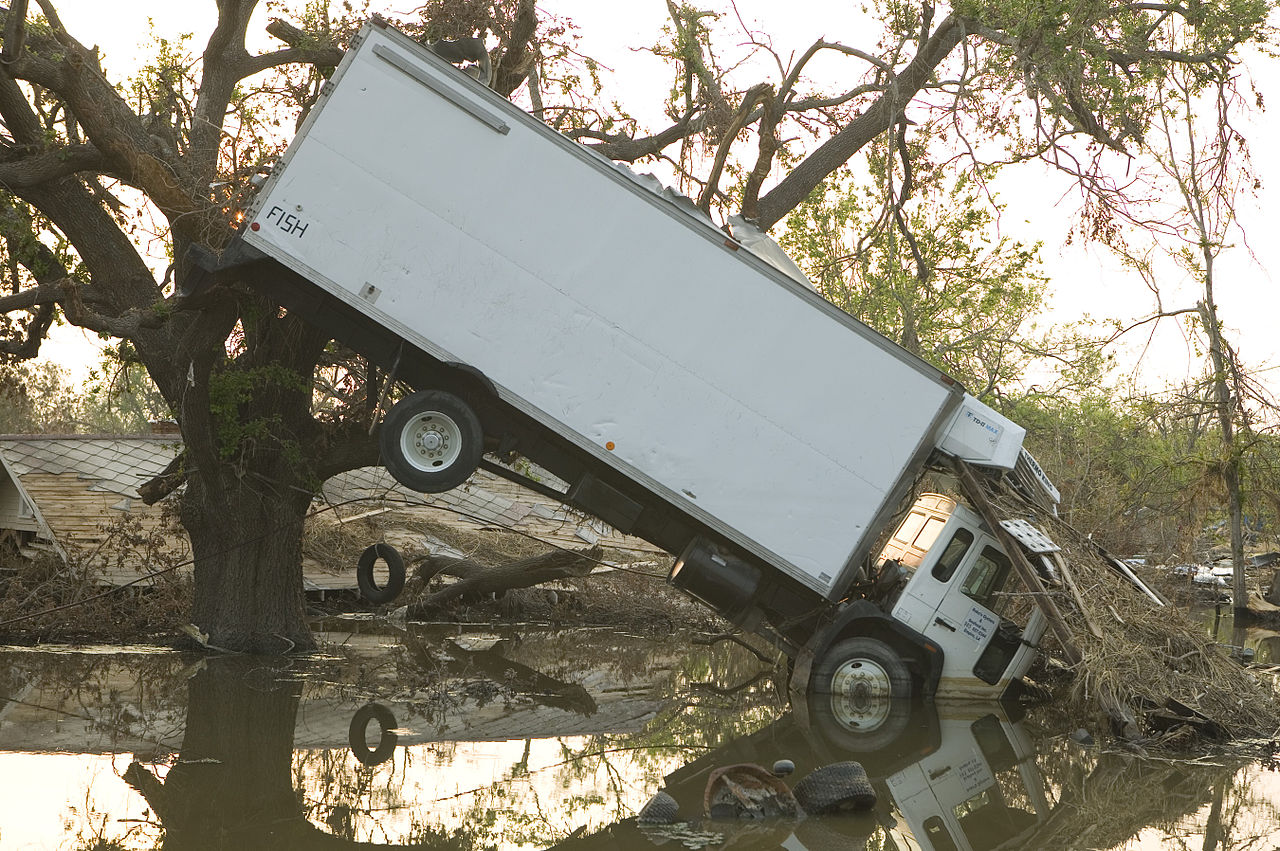 Wikimedia - wikimedia.org
Wikimedia - wikimedia.org
Though it made landfall as a Category 3 storm, Hurricane Katrina strengthened to Category 5 as it lingered over the Gulf days before hitting Louisiana. At its strongest point, the winds from Katrina exceeded 175 mph.
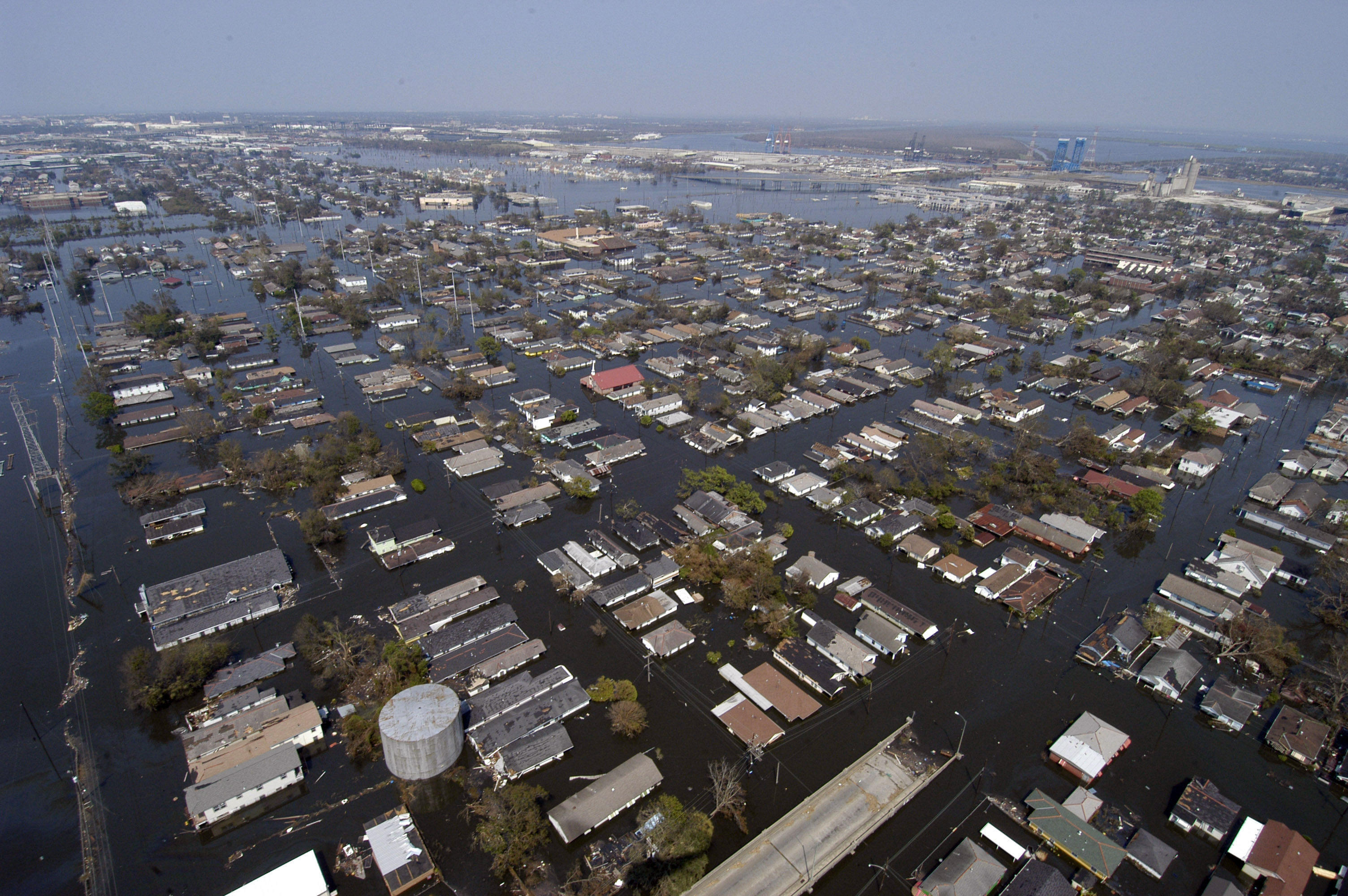 Wikimedia - wikimedia.org
Wikimedia - wikimedia.org
Four days after the hurricane made landfall, the storm surge continued to devastate coastal neighborhoods in Louisiana, Mississippi, Florida, Alabama, and Texas.
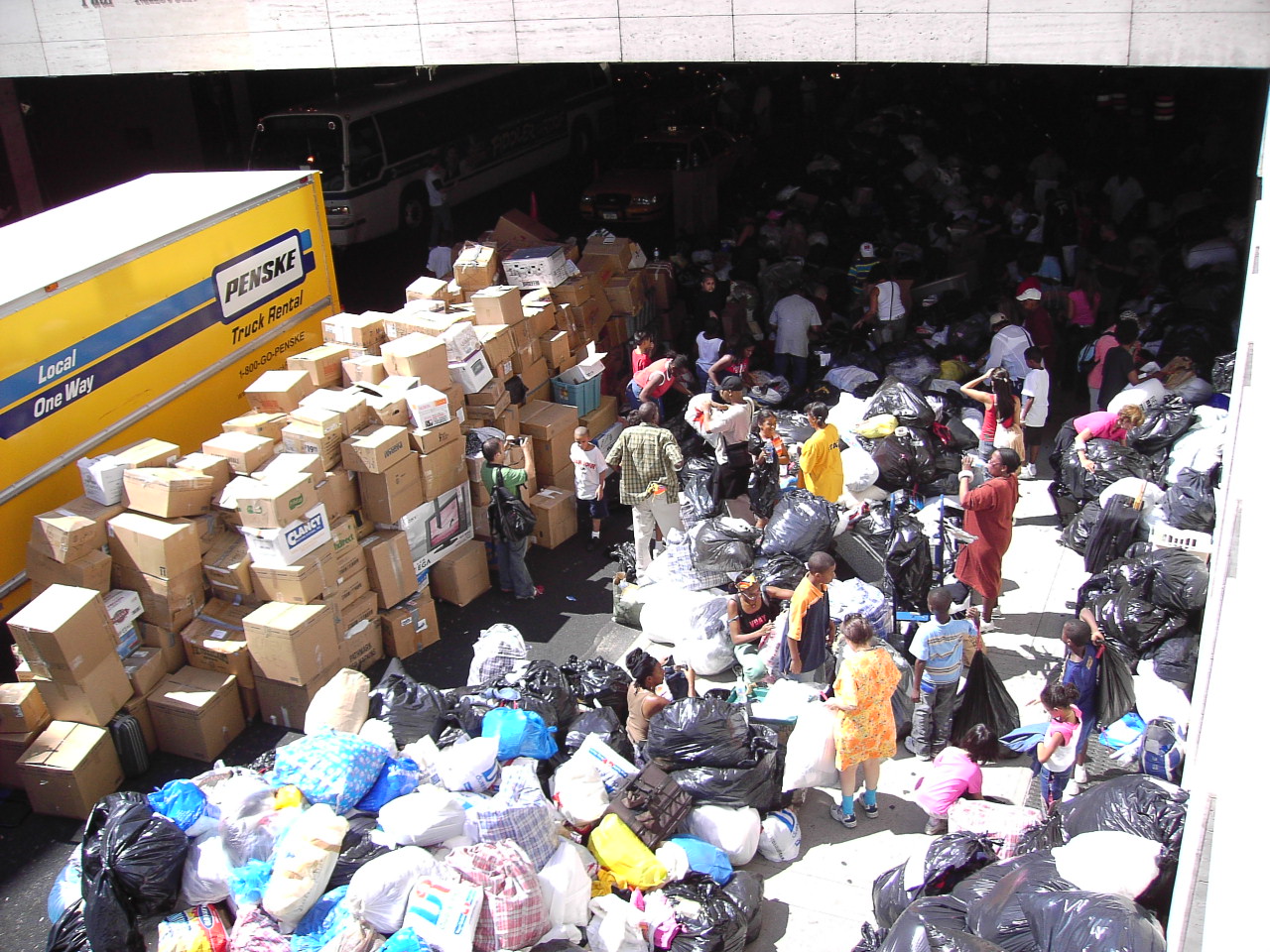 Barret Anspach - flickr.com
Barret Anspach - flickr.com
In response to the natural disaster, people from across the globe donated money and goods to the families affected by Hurricane Katrina. Here, an entire block of New York City is overflowing with bags and boxes full of goods to be sent to the Gulf region.
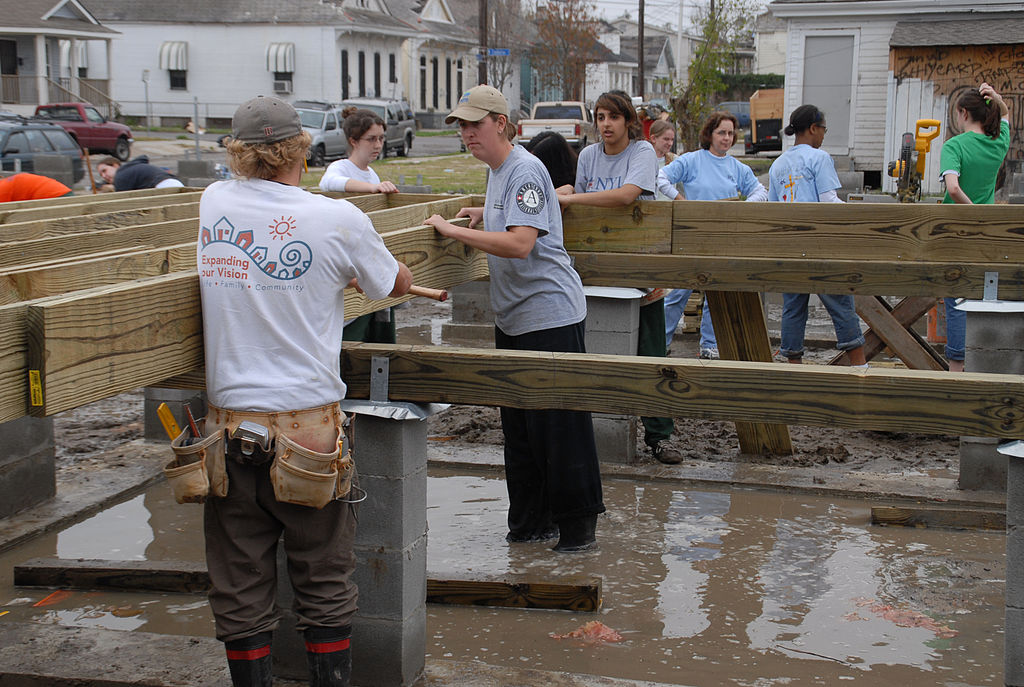 Wikimedia - wikipedia.org
Wikimedia - wikipedia.org
Volunteers from AmeriCorps and Habitat for Humanity—non-profit organizations that provided aid to those affected by the natural disaster—are seen here constructing a home in New Orleans, Louisiana. Prior to Hurricane Katrina, the population of New Orleans was more than 484,000; in July 2006 (less than a year after the storm), the population was just over 230,000.
"By 2014, the population had increased to an estimated 384,320, according to the U.S. Census Bureau, putting New Orleans back on the list of the 50 most-populous cities that year," CNN reported.
Watch ATTN:'s video on Hurricane Katrina here:
Related: How New Orleans Has Brilliantly Reduced its Jail Population
